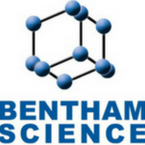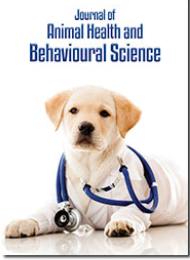Track1: Animal Biotechnology
The potential applications to manage several animal diseases such as, classical swine fever, foot-and-mouth disease, avian flu and bovine spongiform encephalopathy by Animal Biotechnology. The only relevant products of biotech are vaccines, particularly genetically engineered or DNA vaccines. Also Scientists started to use gene therapy for diseases of pet animals. The strong growth during past years are experienced by animal biotechnology industries, clinical trials which developed by humans in animals and many of the diseases of cats and dogs are similar to those in humans.
Track 2:Animal models and testing
Experimentation which conducts inside universities, medical schools, farms, companies like pharmaceuticals defense establishment with commercial facilities that provide animal testing services to industry, animal research in vivo testing is use of non-human animal experiment is called animal testing. Regarding to this, animals are used for education, breeding and defense research which includes pure research as well as applied research. After used in ab experiment animals are euthanized. Most of the animals are purpose to bred in laboratory vary between countries and species, few are caught in the wild or they supplied by dealers who obtain them from auctions and pounds.
Track 3:Animal Reproduction and Genetics
To continue the existence of a species reproduction plays a vital role in providing new species. To maintain themselves for certain period of time, animals compete with other individuals it is enough to them to produce tissue that would be indispensable to maintain their species. To form an independent organism reproductive tissue usually becomes separated. Advance breeding technology and testing services such a genetic trait test, genetic disease tests and DNA typing in animal genetics
Track 4: Animal Welfare
For animal rights there are some groups like PETA, for supporting animal welfare purpose in small term it is to alleviate animal suffering until all animal use is ended. The welfare of farm animals in use for agricultural land, at market, in transit and at the place of slaughter with advice government of any changes that may be necessary. In preventing novel transmissions critical element in animal bio-security works to control of disease agents already present in a particular area. This animal welfare science uses different measures like disease, immune suppression, physiology, longevity and reproduction and there is debate is about indicators provide the information
Track 5: Animal Medicine
When compared to human medicines veterinary medicine is more complicated in research and marketing. Whereas treatment of ailments, diseases, diagnosis and wounds of animals, particularly domestic animals there is a huge of variation in different animal species, and thus each species may need specific medicines for the same disease. There is no regulation in the prices of veterinary medicines like human medicines. Some artificial medicine may cause serious issues, nephrotoxic and expensive, not like seasoning medicines area unit comparatively nontoxic, cheaper and area unit eco-friendly, folks have used them for several generations. Veterinary medicines market accounted for approximately 20% of the total Vaccines market in 2010 worldwide.
Track 6: Animal Bioinformatics
Animal genetics is a foundational discipline in the fields of animal science, animal breeding, and veterinary sciences. While genetics underpins the healthy development and breeding of all living organisms, this is especially true in domestic animals, specifically with respect to breeding for key traits. Molecular and Quantitative Animal Genetics is a new textbook that takes an innovative approach, looking at both quantitative and molecular breeding approaches. The bookprovides a comprehensive introduction to genetic principles and their applications in animal breeding. This text provides a use
Track 7: Wildlife Management
Wildlife Management attempts to balance the needs of wildlife with the needs of people using the best available science. Wildlife management can include game keeping, wildlife conservation and pest control. Wildlife management draws on disciplines such as mathematics, chemistry, biology to gain the best results. With the aim of balancing the needs of wildlife with the needs of people. Most wildlife biologists are concerned with the preservation and improvement of habitats.
Track 8 : Animal Nutrition
Animal nourishment concentrates on the dietary needs of domesticated animals, principally those in horticulture and food production. There are seven noteworthy classes of supplements: sugars, fats, fiber, minerals, protein, vitamin, and water. Most foods contain a blend of a few or the greater part of the supplement classes, together with different substances, for example, toxins or different sorts. A few supplements can be stored internally (e.g., the fat solvent vitamins), while others are required pretty much persistently. Weakness can be caused by an absence of required supplements or, in extraordinary cases, a lot of a required supplement.
Track 9: Dairy Farming
Dairy science investigates the innovation and science behind the generation of milk and milk products. It is a field that arrangements with the preparing of milk and its items. This field includes the utilization of "technology" to make the dairy products and processing more advanced, hi-tech and useful. The dairy technology is a part of food innovation that particularly manages the handling, stockpiling, packaging, distribution and transportation of the dairy items like milk, frozen yogurt, curd and so forth by suggesting the study of biochemistry, bacteriology, nourishment to the milk and milk products.
Track10: Emergency Animal treatments
Pet Emergency Treatment is a special branch to give important and basic care. Faculty practice predominately in the crisis treatment of wiped out and harmed pets. Faculty work intimately with pet's normal veterinarian and send discoveries to them for follow-up mind. Uncommon office is prepared to deal with a wide range of little creature crises including injuries, nibble wound wounds, respiratory crises, gastrointestinal crises, endocrine crises, conceptive crises, visual crises, poisonings, and fundamental strong watch over intriguing pets.
Track 11:Animal Ecology & Physiology
Animal ecology is a majority of the creature life of a specific region or time. Understanding qualities of individual living beings clarifies examples and procedures at different levels of association including populaces, groups, and environments. A few ranges of nature of development that attention on such qualities is life history hypothesis, Eco physiology, metabolic hypothesis of biology, and Ethology. Cases of such qualities incorporate components of a life forms life cycle, for example, age to development, life traverse, or metabolic expenses of propagation. Animal physiology is the science of study of the life-supporting properties, or more specifically the physical and chemical processes that occur within animals.
Track 12 :Livestock Production
Domesticated animals brought up in a farm setting to deliver wares, for example, nourishment, fibre, and labour. The term is frequently used to allude exclusively to those raised for nourishment, and once in a while just cultivated ruminants. Numerous times of development and early adaption of new technologies has improved their prosperity. The pace of progress and scope of chances are probably not going to reduce later on and we gather it is imperative for all ranchers to stay in contact with developments and see how they can be connected to their cultivating organizations to enhance their administration and physical and money related execution.
Track 13: Aquaculture
The farming of aquatic organisms like fishes, aquatic plants, molluscs, crustaceans etc., is known as aquaculture. Aquaculture, also known as aqua farming, is the farming of aquatic organisms such as fish, crustaceans, molluscs and aquatic plants. Aquaculture involves cultivating freshwater and saltwater populations under controlled conditions, and can be contrasted with commercial fishing, which is the harvesting of wild fish.
Track 14 :Animal Cell Culture
Cell culture is the process by which human, animal, or insect cells are grown in a favourable artificial environment. The cells may be derived from multicellular eukaryotes, already established cell lines or established cell strains. In the mid-1900s, animal cell culture became a common laboratory technique, but the concept of maintaining live cell lines separated from their original tissue source was discovered in the 19th century. Animal cell culture is now one of the major tools used in the life sciences in areas of research that have a potential for economic value and commercialization. The development of basic culture media has enabled scientists to work with a wide variety of cells under controlled conditions
Track 15: Animal genetics
Animal genetics is a foundational discipline in the fields of animal science, animal breeding, and veterinary sciences. While genetics underpins the healthy development and breeding of all living organisms, this is especially true in domestic animals, specifically with respect to breeding for key traits. Molecular and Quantitative Animal Genetics is a new textbook that takes an innovative approach, looking at both quantitative and molecular breeding approaches. The bookprovides a comprehensive introduction to genetic principles and their applications in animal breeding. This text provides a use














